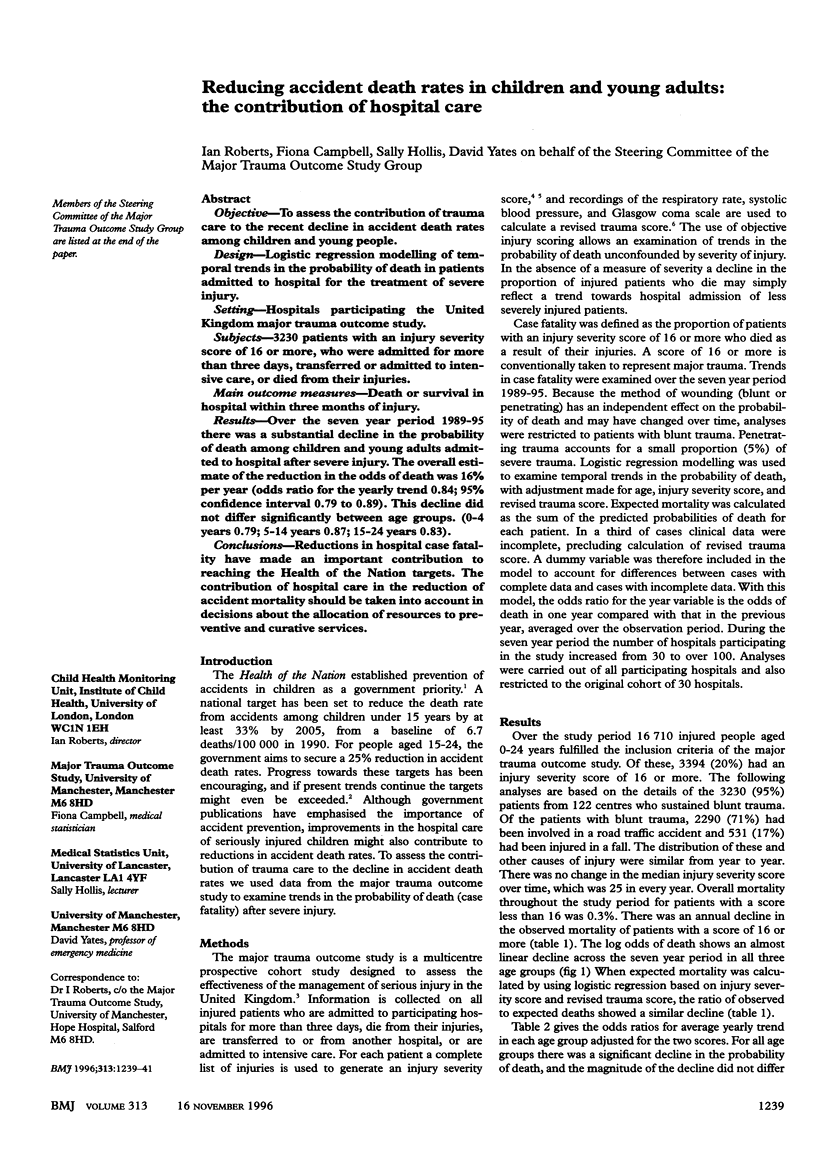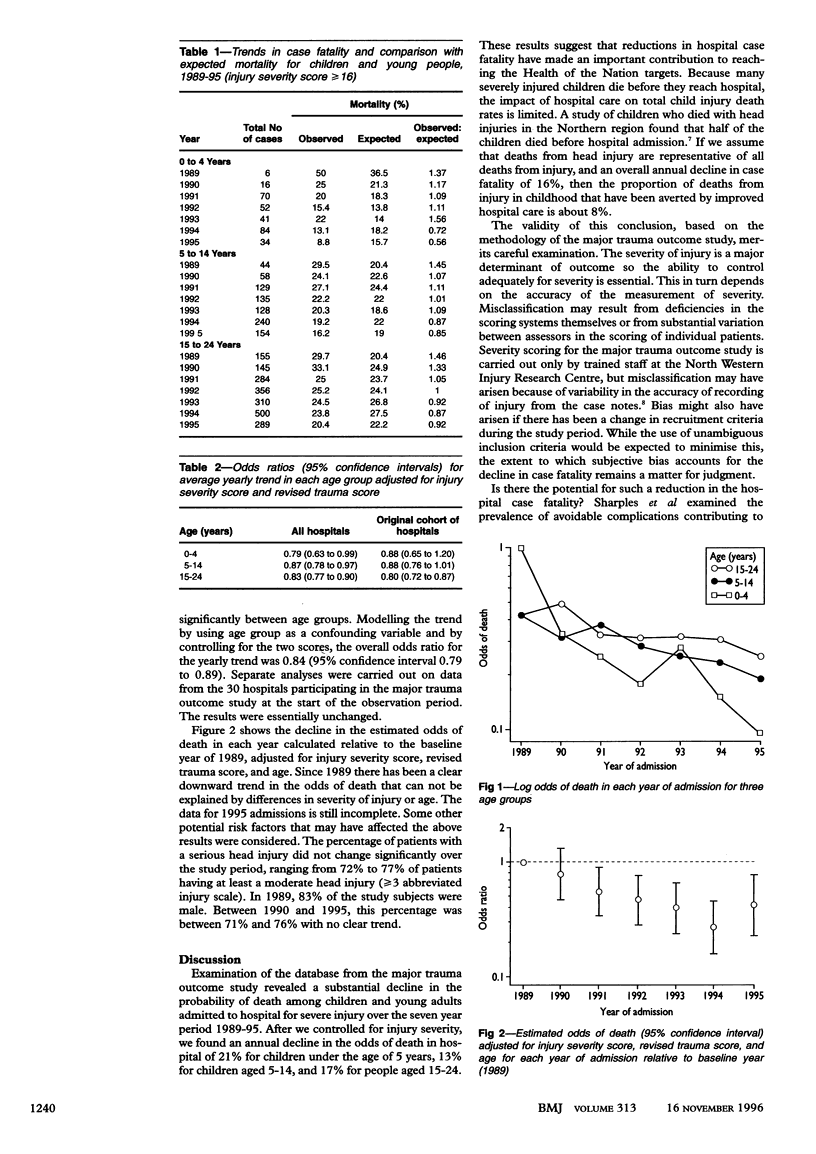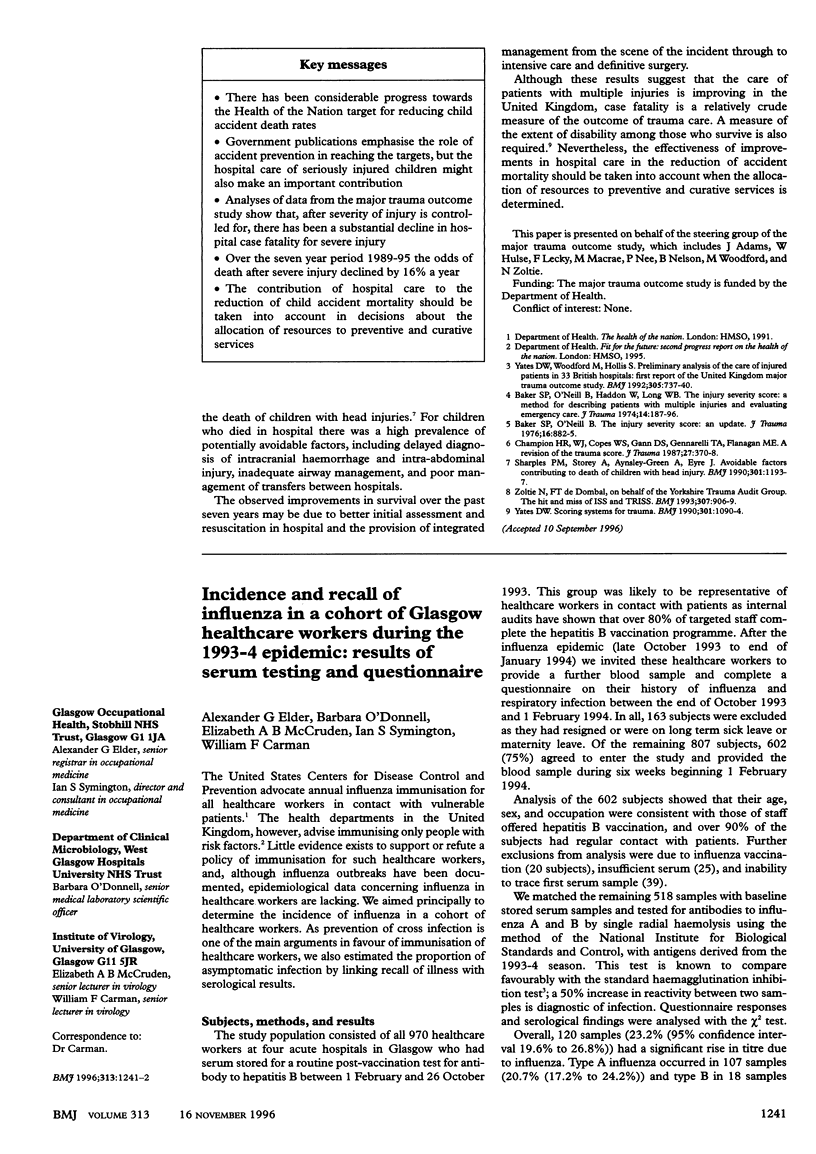Abstract
OBJECTIVE: To assess the contribution of trauma care to the recent decline in accident death rates among children and young people. DESIGN: Logistic regression modelling of temporal trends in the probability of death in patients admitted to hospital for the treatment of severe injury. SETTING: Hospitals participating the United Kingdom major trauma outcome study. SUBJECTS: 3230 patients with an injury severity score of 16 or more, who were admitted for more than three days, transferred or admitted to intensive care, or died from their injuries. MAIN OUTCOME MEASURES: Death or survival in hospital within three months of injury. RESULTS: Over the seven year period 1989-95 there was a substantial decline in the probability of death among children and young adults admitted to hospital after severe injury. The overall estimate of the reduction in the odds of death was 16% per year (odds ratio for the yearly trend 0.84; 95% confidence interval 0.79 to 0.89). This decline did not differ significantly between age groups. (0-4 years 0.79; 5-14 years 0.87; 15-24 years 0.83). CONCLUSIONS: Reductions in hospital case fatality have made an important contribution to reaching the Health of the Nation targets. The contribution of hospital care in the reduction of accident mortality should be taken into account in decisions about the allocation of resources to preventive and curative services.
Full text
PDF


Selected References
These references are in PubMed. This may not be the complete list of references from this article.
- Baker S. P., O'Neill B., Haddon W., Jr, Long W. B. The injury severity score: a method for describing patients with multiple injuries and evaluating emergency care. J Trauma. 1974 Mar;14(3):187–196. [PubMed] [Google Scholar]
- Baker S. P., O'Neill B. The injury severity score: an update. J Trauma. 1976 Nov;16(11):882–885. doi: 10.1097/00005373-197611000-00006. [DOI] [PubMed] [Google Scholar]
- Sharples P. M., Storey A., Aynsley-Green A., Eyre J. A. Causes of fatal childhood accidents involving head injury in northern region, 1979-86. BMJ. 1990 Nov 24;301(6762):1193–1197. doi: 10.1136/bmj.301.6762.1193. [DOI] [PMC free article] [PubMed] [Google Scholar]
- Yates D. W. ABC of major trauma. Scoring systems for trauma. BMJ. 1990 Nov 10;301(6760):1090–1094. doi: 10.1136/bmj.301.6760.1090. [DOI] [PMC free article] [PubMed] [Google Scholar]
- Yates D. W., Woodford M., Hollis S. Preliminary analysis of the care of injured patients in 33 British hospitals: first report of the United Kingdom major trauma outcome study. BMJ. 1992 Sep 26;305(6856):737–740. doi: 10.1136/bmj.305.6856.737. [DOI] [PMC free article] [PubMed] [Google Scholar]
- Zoltie N., de Dombal F. T. The hit and miss of ISS and TRISS. Yorkshire Trauma Audit Group. BMJ. 1993 Oct 9;307(6909):906–909. doi: 10.1136/bmj.307.6909.906. [DOI] [PMC free article] [PubMed] [Google Scholar]


